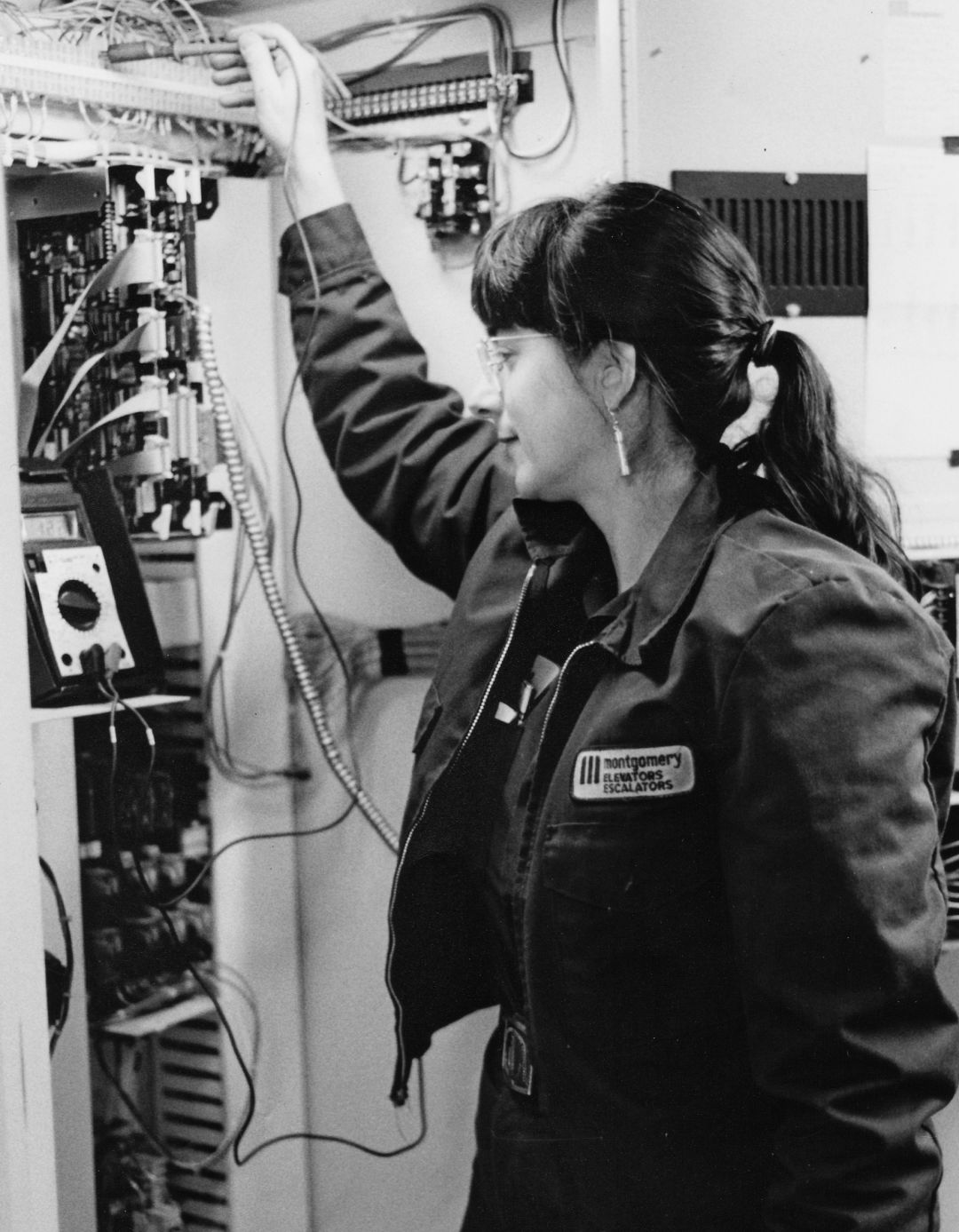What Will It Take to Get More Women in Construction?

Connie Ashbrook in the late 1980s, working as an elevator constructor
Image: Courtesy Donna Chainas
As Portland struggles to find enough workers to meet the booming demand for new buildings, Connie Ashbrook has an obvious solution: hire women. In her world, half of the tradesmen pulling on hard hats and steel-toed boots wouldn’t be men at all.
As the founder (and now director emeritus) of the nonprofit Oregon Tradeswomen, Ashbrook has spent 29 years helping women find work in construction. The organization offers apprenticeship programs, job fairs, even a free image library providing stock art depicting women in the field. According to Ashbrook, manual trades’ gender imbalance is reinforced from a young age, as children grow up seeing only men behind chain-link construction fences.
Ashbrook herself once scratched her head at the prospect. She moved to Portland from St. Louis in 1978, and quickly found work as a waitress. It was a thankless, low-paying job. Then a friend who was a heavy equipment operator told her about a federal highway program aimed at recruiting disadvantaged workers. She suggested Ashbrook learn to drive a dump truck.
“I could never do that,” Ashbrook, who stands just under five-foot-three, remembers responding. “If you can drive that,” her friend said, pointing to Ashbrook’s red beater of a pickup truck, “you might be able to drive a dump truck.”
Ashbrook trained for a few weeks, then got hired to help straighten out US Highway 26 near John Day. Later, she trained and worked as a carpenter. She helped build the overpasses that make up the I-205/Airport Way interchange.
“I boast about that one all the time, because most people in Portland have been over it,” Ashbrook said. “One of the beauties of working in the trades is that your work is sort of a monument.”
When a recession hit in 1982, Ashbrook trained again, this time as an elevator constructor—the highest paid of the construction trades, with a current prevailing wage of $48 per hour—and stuck with it. She became the first female in Oregon to attain the “journey” level, and found the work steady, satisfying, and lucrative. There was just one thing missing: other women. Ashbrook did meet a few other women in training programs, at union meetings, and just by glimpsing each other from across a job site. They started gathering for happy hours and potlucks, offering emotional support and job leads. In 1989, Ashbrook formalized the group by founding Oregon Tradeswomen.
Today, the nonprofit has grown to employ 15 women itself and has helped boost the female percentage of Oregon’s construction workforce to more than twice the national average. But at about 7 percent, there’s still plenty of room for progress.
Luckily, Ashbrook isn’t afraid of hard work.

















